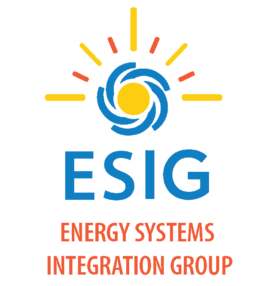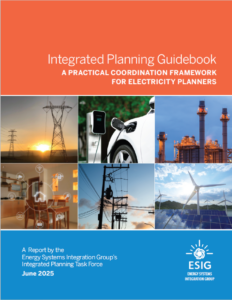This is a set of three reports produced by the Integrated Planning Task Force, outlining a framework and set of walk/jog/run steps that planners can use to move toward integrating planning for electricity generation, transmission, and distribution, and customer loads and resources.
Traditional electricity planning practices have often been siloed, with planners in the four planning areas maintaining separate planning teams, models, data inputs, and vocabularies. But this siloed approach is no longer sufficient to address today’s ongoing transformations: accelerating load growth; rapid technology development; the growth of solar, wind, and battery resources; evolving extreme weather events; and the emerging need to consider integration across coupled energy systems.
To address these challenges, ESIG convened a task force of experts from utilities, system operators, research organizations, national laboratories, consultants, and other planning practitioners to define integrated planning opportunities and document practical steps that planners can take toward a comprehensive planning approach.
- The first report is Foundations of Integrated Planning: Defining a Framework for Comprehensive Energy System Planning. It defines integrated planning and presents a four-part framework focused on the integration of inputs, analysis, actions, and decision-making.
- The second report, Integrated Planning Guidebook: A Practical Coordination Framework for Electricity Planners, provides practical recommendations for today’s electricity system planners to advance toward increasing levels of integration using a walk/jog/run approach.
- The third report, Optimization for Integrated Electricity System Planning: Opportunities for Integrated Planning in Capacity Expansion Models, explores the opportunities and challenges of using economic optimization capacity expansion modeling to consider a broader set of integrated planning constraints and investment opportunities.
- The reports were presented on June 17, 2025 in an ESIG Webinar.
The increasing integration of generation, transmission, distribution, and customer DER planning will pave the way for a reliable, affordable, and resilient 21st century power system.









